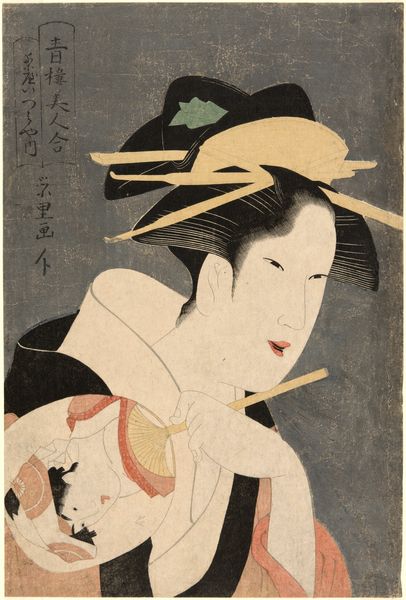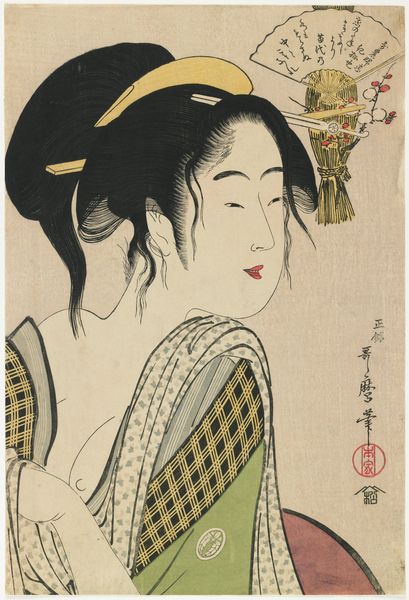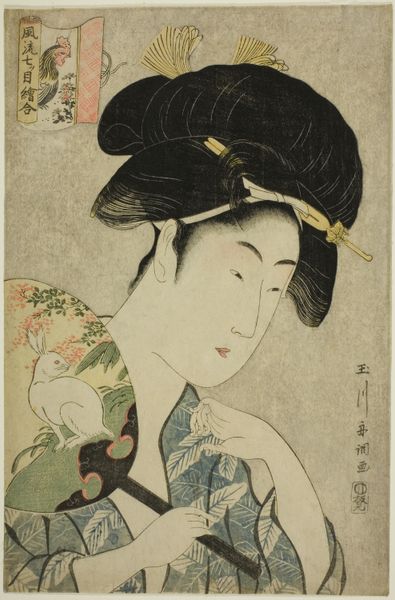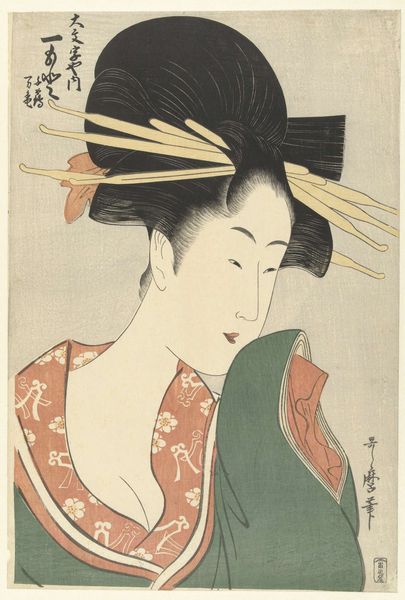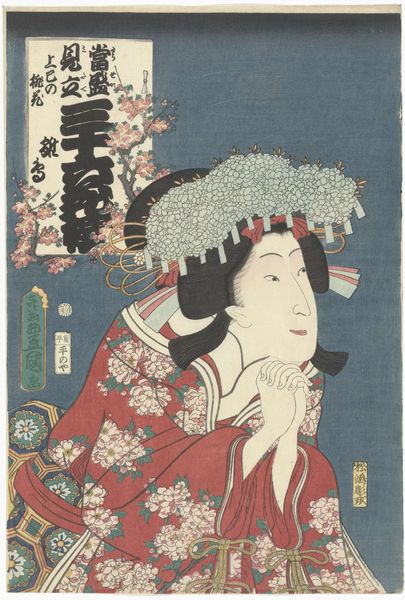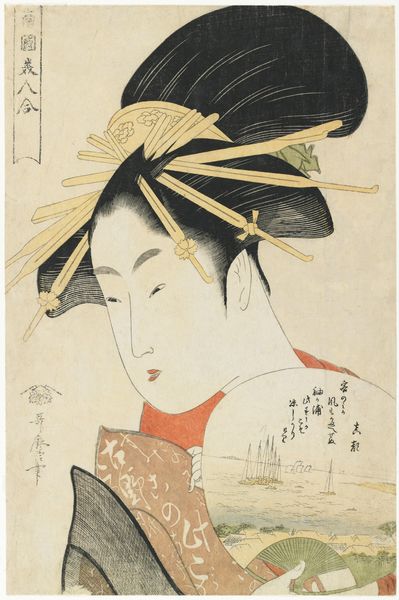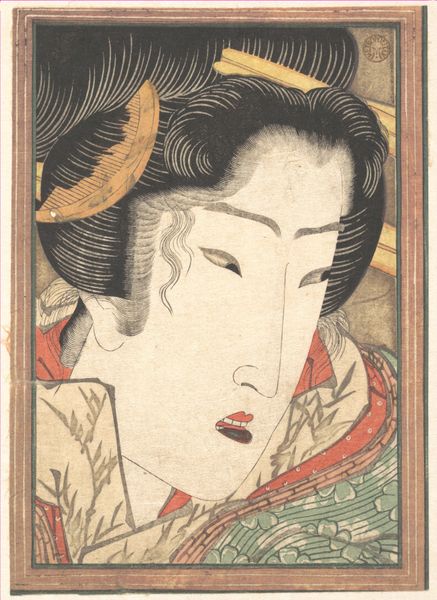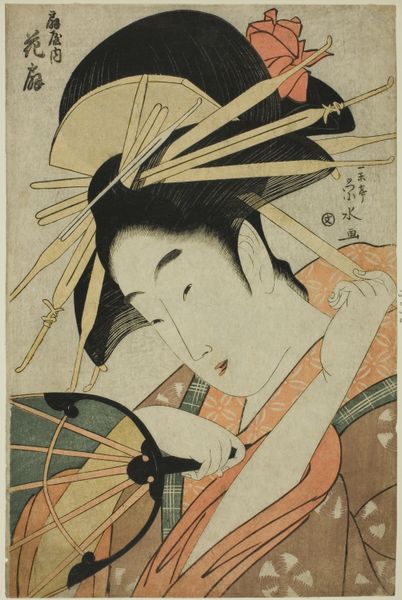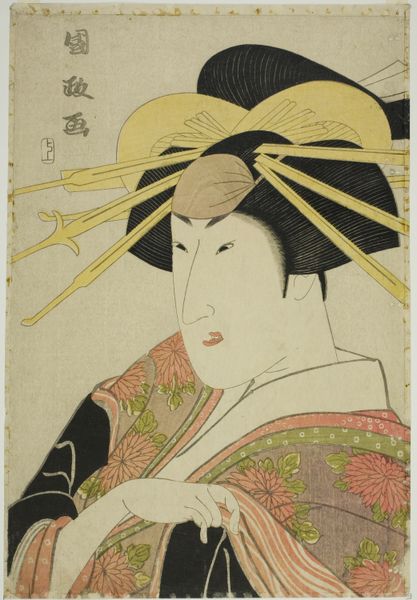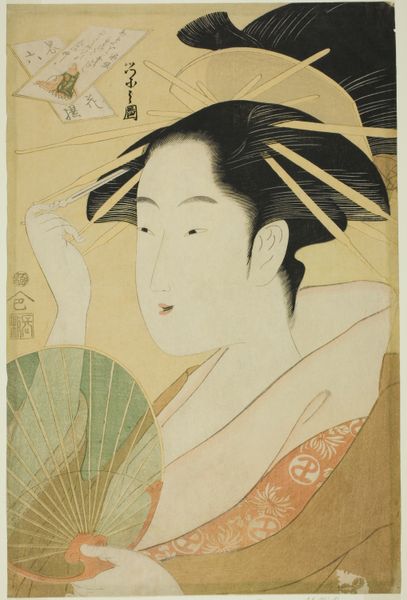
print, woodblock-print
#
portrait
# print
#
caricature
#
caricature
#
ukiyo-e
#
woodblock-print
Dimensions: height 250 mm, width 174 mm
Copyright: Rijks Museum: Open Domain
Curator: Looking at this piece, I immediately get a sense of reserved theatricality, like a posed moment frozen in time. The subject is certainly aware of the gaze upon them. Editor: Indeed. We're observing a woodblock print dating back to 1841-1845. Utagawa Sadamasu (II) is the artist. Its title is “Onoe Baikô III in vrouwenrol met waaier in de hand”— or “Onoe Baikô III in a female role with fan in hand” as it translates. Curator: That's interesting because the material production of Ukiyo-e prints involved an intense division of labor. A designer, engraver, printer, and publisher, each a skilled craftsperson contributing to this object, not just the "artist" who conceptualized it. How do these power structures operate within the art world today? Editor: Exactly. Think of how Kabuki theatre itself functions. Male actors performing female roles —"onna-gata"—playing with gender and perception. Utagawa's work exists within this realm of artifice and representation. This role challenges fixed notions, disrupting expected behavior both on stage and perhaps, within the public sphere observing this very image. Curator: That hand holding the fan... the material quality and the printing process are integral here. It showcases sophisticated techniques to suggest fabric texture, detailed hair ornaments, while also communicating volume using line and color in this particular medium of expression. What impact has commercializing art with printmaking, like we see in Ukiyo-e, had on its value historically and to our contemporary expectations of artwork uniqueness? Editor: Ukiyo-e prints democratized art ownership by circulating it beyond the elite. We often focus on singular authorship, but in these prints and the theater which serves as inspiration for this art form, the combined cultural labor is as impactful as the single artistic genius. The print gained a kind of social power as the consumption of these images became deeply tied to identity and public roles. Curator: I still keep coming back to the materiality. Each element – paper, ink, wood – played its vital role to carry the essence of theatre to society and contribute to making art accessible to a wider audience, prompting reflection on its socio-economic consequences Editor: Reflecting on it, I think we've circled back to that initial observation. We touched on how a static image of Onoe Baikô III holds complexities far beyond being merely a portrait.
Comments
No comments
Be the first to comment and join the conversation on the ultimate creative platform.
